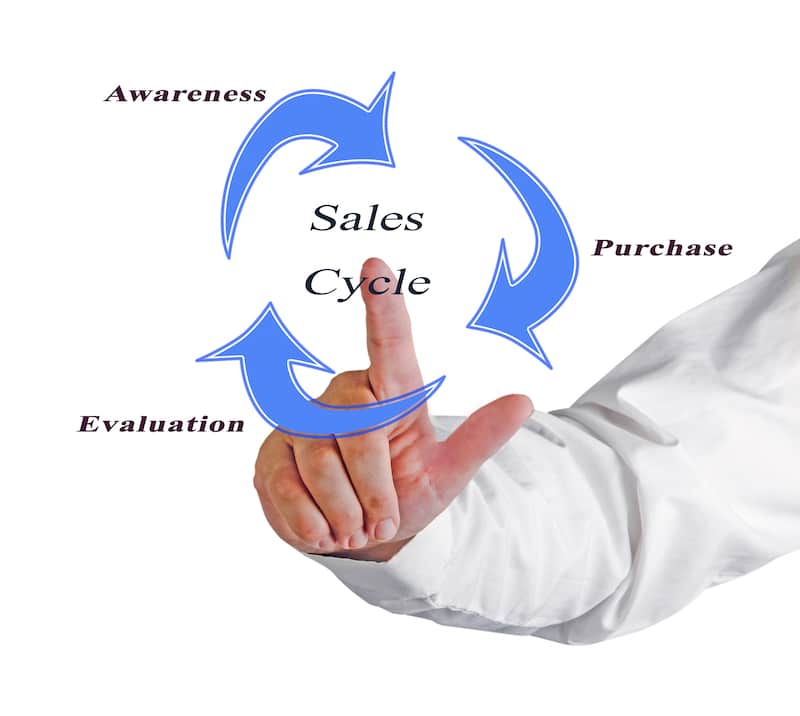How to Influence Sales Cycle Length
In an earlier post on the topic of Sales Velocity, I covered an important and overarching success metric that focuses one thing: How much revenue can you expect to bring in each day? The Sales Velocity equation looks at four things: 1) number of opportunities in pipe, 2) average opportunity value, 3) historical percentage win-rate and 4) average length of sales cycle.
In this post, I’ll dive deeper into the latter: average length of sales cycle. The length of your sales cycle is the factor with the most leverage in the Sales Velocity equation. It also happens to be the factor over which you have the most influence.
The number of opportunities in your pipeline is predominantly influenced by your ability to generate demand for your product or service. Whether it’s through traditional outbound efforts or inbound content-driven marketing, prospects are ultimately in control of when and how they express interest in your products or services. A Sales Qualified Lead (SQL) is a potential customer who has met significant qualification criteria, much of which are the actions they’ve taken or indications of interest in researching your products and services. While the goal in demand generation is to drive awareness, interest and action with your company, increasingly, customers are in the driver’s seat for this part the buying process.
The average deal size lays at the cross-section of your pricing model and your customers’ needs and budget. While you are in control of your pricing model, deal concessions, and the quotes you put forth to your prospects, the size of your deals is also subject to your customers’ needs and budgets, which are outside of your control. Unless you’re moonlighting as a procurement manager at your prospect’s organization, there’s only so much you can do to influence the size of an opportunity. And unless you’re the sole source in the market place for your product your service, your also subject to your competition’s pricing. You can certainly influence deal size, but there is a lot stacked up against you.
As for your win-rate, it’s a reflection of your company’s ability to deliver the most competitive and compelling buying experience for your customers. While you do have a great deal of influence on your win-rate, once again, your customer has to ultimately decide to move forward and purchase your product or service.
This leaves us with the average sales cycle length. Unlike all other factors, you are ultimately in control of how long you want to pursue an opportunity. You can define how long an opportunity should stay in your pipe. You get to design your customers’ buying process as you see fit for your organization. Do you ever stop and ask yourself exactly why your sales cycle is as long as it is? Your sales cycle is a set of activities taken on by your company and your potential customers. For each of your pipeline stages, what activities are conducted by your organization and what activities are conducted by your potential customer? These questions are often answered by Sales Operations professionals and, in turn, operationalized as your CRM pipeline stages. However, one critical thing that many Customer Relationship Management (CRM) systems fail to address is the time component for each of the underlying activities in the pipeline stages.
To illustrate, let’s say your current average sales cycle length is four months or 120 days but you believe that your customers might be just as able and willing to buy your products on a 60- or 90-day average? How can you drive your sales cycle length down? More specifically, how can you influence your Sales organization and your customers to conform to that target sales cycle length?
The answer is Customer Journey Momentum.
You might know that Customer Journeys in Sugar provides sellers with a template for the customer buying process. It enables you to close opportunities more quickly buy providing not only visual, interactive and guided path through your opportunities but also a set of subsequent activities for each stage.
Momentum is a new feature within Customer Journeys that adds a time component to each activity. For example, let’s say you know that the optimal time to create, gain approval and send a customer quote is two days. You would then add some number of Momentum points to this activity such that when it’s completed within the allotted time, the Customer Journey for the opportunity is awarded the full points available. However, if the activity takes four days, twice the allotted time, it contributes only half of its full value. As you can see, adding Momentum to Customer Journeys in your opportunities can help to minimize your average sales cycle length in a couple of important ways: 1) It incentivize sellers to complete tasks within the allotted time and 2) enables Sales Operations managers to gain visibility into where certain opportunities may have stalled and why. And from there, in turn, better calibrate Momentum scores to align with target average sales cycle length.
Our support documentation provides an excellent guide on Customer Journey Momentum here.


